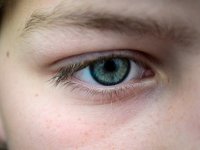Islands of Personality and Trains of Thought
In her third post about the film “Inside Out,” Lori Desautels explores visualizing the memories and emotions that inform students’ identities and shape their cognitive processes.
Your content has been saved!
Go to My Saved Content.In the film Inside Out, 11-year-old Riley holds several islands of personality in her brain. These islands were created from her past core memories, experiences, interests, and passions. Positive and negative core memories create these islands that make up our personality or sense of self. Riley's included Family Island, Friendship Island, Soccer Island, and Goofball Island. Our brains form islands of personality (or, for the purposes of this discussion, islands of self) because of our interests, relationships, experiences, and how others in our lives have affirmed, supported, or possibly weakened our thoughts about who we are and our ever-developing life purposes. How can educators assist in building upon, repairing, and strengthening our students' islands of self? When we take a few minutes to authentically share and reflect with our students, we cultivate a connection that sustains us through the difficult moments within our classrooms.
Validation is an effective brain-aligned strategy that tells a student, "I hear you and I understand." Validating a child's or adolescent's feelings helps the student to "feel felt," which is integral to every student's emotional, social, and cognitive development. As I began delving into this activity, I interviewed several students age 7-17. Below are examples of their islands of self. Not only did they share the names of their islands, they also explained why and how these islands developed. The students loved this type of reflection, giving me a snapshot into their worlds of beliefs, private logic, and sense of self.
- People Island
- Laughing Island
- Scary Island
- Animal Island
- Intellectual Island
- Dancing Island
- Spiritual Island
- Not Good Enough Island
- Island of the Arts
Strategies to Develop Islands of Self
1. Ask students to identify and share their islands of self. As educators, we begin to model this activity by explaining to students that our islands are always changing based on our interests, passions, affirmations, experiences, relationships, and perceptions. Change is life, and much like real islands, our islands can grow healthier or diminish and weaken.
2. Create and display islands of self at the beginning of the year, explaining that these could change based on our experiences. This is a fabulous strategy for gathering perceptual data. The more that students know about themselves, the stronger learners they are. Self-reflection and self-observation are the building blocks for cognitive and academic growth.
Creating islands of self is an activity for all ages and grade levels as students begin to see analogies, contrast, differences, and similarities in and out of school. How many of our students would have an island of mistrust or an island of a broken heart?
3. Create a Future Island and encourage students to imagine, innovate, and begin planning what social and emotional topography will be a part of this island.
4. These islands could be integrated into language arts and history curricula, and of course into personal narratives.
Consider teaching a history, biology and geography lesson looking at changes in people, landforms, and our bodies, and how the environment and cultural shifts create and modify new islands of self.
5. Islands of self could be compared to building mathematical operations and algorithms.
6. Islands of self could assist in developing a thesis and the foundations for nonfiction writing, science research, and the development of a hypothesis.
Train of Thought
In Inside Out, we watched Riley's train of thought run through her mind during the days and stop or slow down when she was sleeping. We know that the brain never stops working unless we are dead, and as my fourth-grade students suggested last week, maybe our trains take other routes when we are sleeping, and quite possibly our subconscious thought processes are the engineers. We saw fear take over Riley's train of thought on her first day of school, followed by anger and sadness. Her changing feelings were distracting headquarters (the prefrontal cortex) in her brain and therefore her train of thought was derailed a few times. Students love to learn about their own neurobiology and when they understand what distracts or derails their train of thought in the frontal lobes, they can implement strategies to help them pay attention and focus.
Paying attention and being focused are prerequisites to sustainable learning. Sustained attention and working memory are executive functions that are not fully developed until early adulthood. If a child or adolescent has experienced some form of daily ambient trauma, these executive functions can be underdeveloped or stagnant. We know that emotions drive attention, and that many of our students walk into our classrooms in a hyper-vigilant brain state, constantly scanning the environment for feelings of safety and familiarity. Brain architecture is intimately affected when an individual is experiencing chronic levels of stress. In a stress response state, the neural circuitry is forming synapses in the limbic system, leaving the frontal lobes with very little oxygenated and glucose-rich blood.
For many students, what looks like inattentiveness or lack of focus is quite the opposite. They are paying close attention to the perceived threats in their environments.
Questions for Students
- When does your train of thought run smoothly with few stops?
- When does your train of thought struggle? Why?
- What can I do in the classroom to help your train run with great speed and accuracy?
- What can you do to help your train of thought stay on the tracks and reach its destination?
Strategies
- Amanda Machado's Should Schools Teach Kids to Meditate? (The Atlantic)
- A collection of Huffington Post articles on Mindfulness in Schools
- My Edutopia post Energy and Calm: Brain Breaks and Focused-Attention Practices
What other ways might you help students visualize their identity and how it shapes their cognitive processes?
